Nokia 2011 Annual Report Download - page 83
Download and view the complete annual report
Please find page 83 of the 2011 Nokia annual report below. You can navigate through the pages in the report by either clicking on the pages listed below, or by using the keyword search tool below to find specific information within the annual report.-
 1
1 -
 2
2 -
 3
3 -
 4
4 -
 5
5 -
 6
6 -
 7
7 -
 8
8 -
 9
9 -
 10
10 -
 11
11 -
 12
12 -
 13
13 -
 14
14 -
 15
15 -
 16
16 -
 17
17 -
 18
18 -
 19
19 -
 20
20 -
 21
21 -
 22
22 -
 23
23 -
 24
24 -
 25
25 -
 26
26 -
 27
27 -
 28
28 -
 29
29 -
 30
30 -
 31
31 -
 32
32 -
 33
33 -
 34
34 -
 35
35 -
 36
36 -
 37
37 -
 38
38 -
 39
39 -
 40
40 -
 41
41 -
 42
42 -
 43
43 -
 44
44 -
 45
45 -
 46
46 -
 47
47 -
 48
48 -
 49
49 -
 50
50 -
 51
51 -
 52
52 -
 53
53 -
 54
54 -
 55
55 -
 56
56 -
 57
57 -
 58
58 -
 59
59 -
 60
60 -
 61
61 -
 62
62 -
 63
63 -
 64
64 -
 65
65 -
 66
66 -
 67
67 -
 68
68 -
 69
69 -
 70
70 -
 71
71 -
 72
72 -
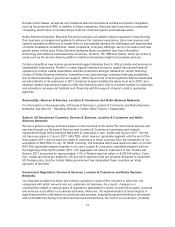 73
73 -
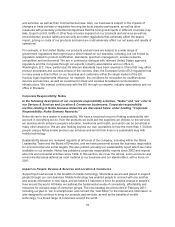 74
74 -
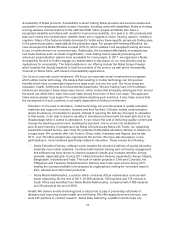 75
75 -
 76
76 -
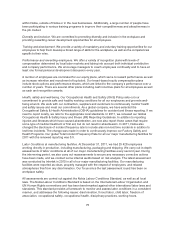 77
77 -
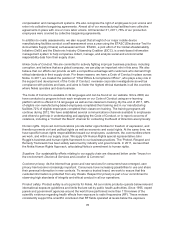 78
78 -
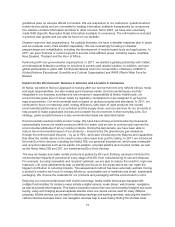 79
79 -
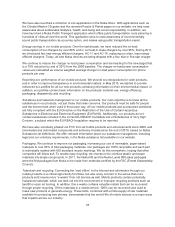 80
80 -
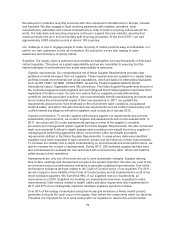 81
81 -
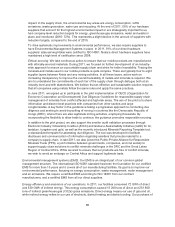 82
82 -
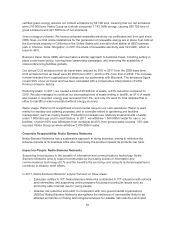 83
83 -
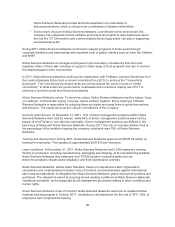 84
84 -
 85
85 -
 86
86 -
 87
87 -
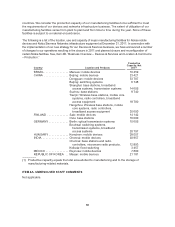 88
88 -
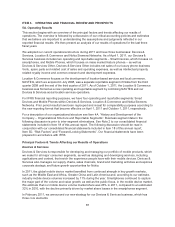 89
89 -
 90
90 -
 91
91 -
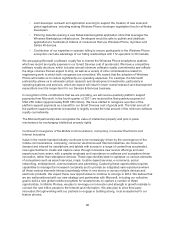 92
92 -
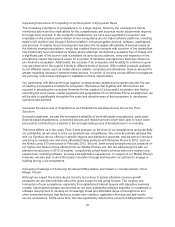 93
93 -
 94
94 -
 95
95 -
 96
96 -
 97
97 -
 98
98 -
 99
99 -
 100
100 -
 101
101 -
 102
102 -
 103
103 -
 104
104 -
 105
105 -
 106
106 -
 107
107 -
 108
108 -
 109
109 -
 110
110 -
 111
111 -
 112
112 -
 113
113 -
 114
114 -
 115
115 -
 116
116 -
 117
117 -
 118
118 -
 119
119 -
 120
120 -
 121
121 -
 122
122 -
 123
123 -
 124
124 -
 125
125 -
 126
126 -
 127
127 -
 128
128 -
 129
129 -
 130
130 -
 131
131 -
 132
132 -
 133
133 -
 134
134 -
 135
135 -
 136
136 -
 137
137 -
 138
138 -
 139
139 -
 140
140 -
 141
141 -
 142
142 -
 143
143 -
 144
144 -
 145
145 -
 146
146 -
 147
147 -
 148
148 -
 149
149 -
 150
150 -
 151
151 -
 152
152 -
 153
153 -
 154
154 -
 155
155 -
 156
156 -
 157
157 -
 158
158 -
 159
159 -
 160
160 -
 161
161 -
 162
162 -
 163
163 -
 164
164 -
 165
165 -
 166
166 -
 167
167 -
 168
168 -
 169
169 -
 170
170 -
 171
171 -
 172
172 -
 173
173 -
 174
174 -
 175
175 -
 176
176 -
 177
177 -
 178
178 -
 179
179 -
 180
180 -
 181
181 -
 182
182 -
 183
183 -
 184
184 -
 185
185 -
 186
186 -
 187
187 -
 188
188 -
 189
189 -
 190
190 -
 191
191 -
 192
192 -
 193
193 -
 194
194 -
 195
195 -
 196
196 -
 197
197 -
 198
198 -
 199
199 -
 200
200 -
 201
201 -
 202
202 -
 203
203 -
 204
204 -
 205
205 -
 206
206 -
 207
207 -
 208
208 -
 209
209 -
 210
210 -
 211
211 -
 212
212 -
 213
213 -
 214
214 -
 215
215 -
 216
216 -
 217
217 -
 218
218 -
 219
219 -
 220
220 -
 221
221 -
 222
222 -
 223
223 -
 224
224 -
 225
225 -
 226
226 -
 227
227 -
 228
228 -
 229
229 -
 230
230 -
 231
231 -
 232
232 -
 233
233 -
 234
234 -
 235
235 -
 236
236 -
 237
237 -
 238
238 -
 239
239 -
 240
240 -
 241
241 -
 242
242 -
 243
243 -
 244
244 -
 245
245 -
 246
246 -
 247
247 -
 248
248 -
 249
249 -
 250
250 -
 251
251 -
 252
252 -
 253
253 -
 254
254 -
 255
255 -
 256
256 -
 257
257 -
 258
258 -
 259
259 -
 260
260 -
 261
261 -
 262
262 -
 263
263 -
 264
264 -
 265
265 -
 266
266 -
 267
267 -
 268
268 -
 269
269 -
 270
270 -
 271
271 -
 272
272 -
 273
273 -
 274
274 -
 275
275 -
 276
276 -
 277
277 -
 278
278 -
 279
279 -
 280
280 -
 281
281 -
 282
282 -
 283
283 -
 284
284 -
 285
285 -
 286
286 -
 287
287 -
 288
288 -
 289
289 -
 290
290 -
 291
291 -
 292
292 -
 293
293 -
 294
294 -
 295
295 -
 296
296
 |
 |
certified green energy reduced our indirect emissions by 54 100 tons, meaning that our net emissions
were 210 900 tons. Nokia Group as a whole consumed 1 143 GWh energy, causing 535 700 tons of
gross emissions and 421 300 tons of net emissions.
Green energy purchases. We have purchased renewable electricity via certificates and from grid since
2006. Now, our first onsite installations for the generation of renewable energy are in place: fuel cells at
the Sunnyvale property in California in the United States and a small biofuel station at SEZ business
park in Chennai, India. Altogether, in 2011 the share of renewable electricity was 193 GWh, which is
equal to 40%.
Business travel. Since 2008, we have taken a stricter approach to business travel, including putting in
place a new travel policy, running travel awareness campaigns, and improving the availability of
videoconferencing facilities globally.
Our annual CO2 emissions from air travel were reduced by 36% in 2011 from the 2008 base level.
CO2 emissions from air travel were 84 200 tons in 2011, which is 3% more than in 2010. The increase
in travel resulted from organizational change and our partnership with Microsoft. The emissions figure
covers 99% of our air travel and has been calculated with a conservative interpretation of GHG
Protocol emission factors.
Reducing waste. In 2011, we caused a total of 45 900 ton of waste, a 23% reduction compared to
2010. We also managed to continue our decreasing trend of waste ending in landfill, as 91% of waste
was reused or recycled, energy was recovered from 5%, and only 4% went for final disposal that is,
either for landfill or was incinerated without energy recovery.
Water usage. Water is not a significant environmental issue for our own operations. Water is used
mainly for sanitary and catering purposes, and to a smaller extent in gardening and facilities
management, such as cooling towers. Production processes use relatively small amounts of water,
under 1 000 liters per year in each factory. In 2011, we withdrew 1 309 000m3water for use in our
facilities, of which 95% was withdrawn from municipal and 5% from ground water sources. 10% was
recycled. Nokia Group as whole withdrew 2 019 000m3water.
Corporate Responsibility: Nokia Siemens Networks
Nokia Siemens Networks has a sustainable approach to doing business, aiming to minimize the
adverse impacts of its business while also maximising the positive impacts its products can have.
Impact on People: Nokia Siemens Networks
Supporting broad access to the benefits of information and communications technology. Nokia
Siemens Networks aims to support communities by increasing access to information and
communications technology (ICT)–and the benefits this can bring–and using its technical expertise to
contribute to disaster relief efforts.
In 2011, Nokia Siemens Networks’ support focused on three areas:
•Education related to ICT. Nokia Siemens Networks contributed to ICT education with schools
and universities, and supporting online programs focusing on particular issues such as
promoting safer Internet use for young people.
•Disaster risk reduction and relief. In cooperation with non-governmental organizations
(NGOs), Nokia Siemens Networks strengthens the resilience of communities likely to be
affected and works on finding technological solutions for disaster risk reduction and relief.
81
